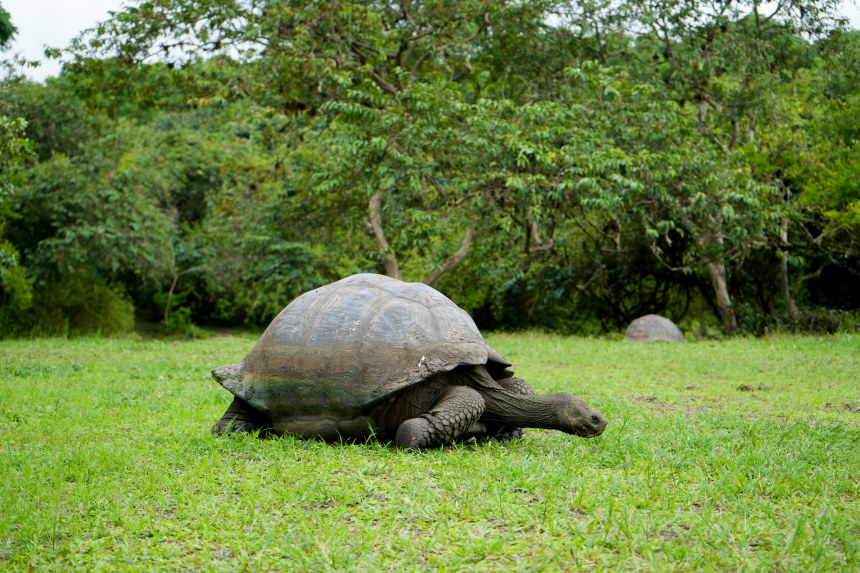
Back in the day, giant tortoises could have been spotted anywhere on Galapagos. Their population used to be ten times higher than the current human population on the islands. Today you can find the biggest wild populations in selected areas of Santa Cruz and Isabela. Most islands also have breeding centers that pioneer conservation efforts.
Here is all you need to know about meeting these peaceful giants.
Conservation status
From an initial population of 250,000, only 60,000 remain today (over 90% population was reduced by human interaction).
Out of the 12 species, six are Critically Endangered, three are Endangered and three are Vulnerable.
Many tortoises were lost over centuries, hunted by whalers, pirates and sailors that valued them as a source of meet that required minimal maintenance, and used their fat as oil in lamps. Today, they are threatened by non-native species such as dogs and rats, migration barriers, pollution, and cattle competing for vegetation.
The only natural predator is the Galapagos hawk that preys on eggs and baby tortoises.
Thankfully, conservation efforts aim to increase the population.
Where can I see giant tortoises?
Home to the second largest population of giant tortoises in Galapagos, the highlands of Santa Cruz is the best place to see giant tortoises in the wild. Here, they roam freely in large numbers and the geography of the island makes it more accessible than the Alcedo population on Isabela.
The Galapagos Giant Tortoise Experience: the most iconic tour in Santa Cruz
The Galapagos Giant Tortoise Experience brings you the most intimate encounter with Chelonoidis porteri, endemic to the south west part of the island, and named after Captain David Porter, who studied them in 1813. You will be able to observe giant tortoises in their natural habitat all year round, and you will get up to speed with the latest insights from our naturalist guide.
This is the only tour that gives you an all-round explanation of the local habitat, so that you can really see first-hand how giant tortoises have thrived in such a competitive environment over millions of years.
Find more details in my Giant Tortoise Tour in Santa Cruz.
What is the best time to see giant tortoises?
The best sightings of giant tortoises in the wild in Santa Cruz are from May to December, although you will be able to observe giant tortoises in their natural habitat all year round.
During the day, they are most active at midday during the cool season (June/July to December/January) and early morning or late afternoon in hot season (December/January to June/July). The Galapagos Giant Tortoise Experience start times have been designed so that you have the best chance to see them in action.
What do I need to know before seeing giant tortoises?
Remember to observe the 2-meter rule
Walk carefully to avoid vibration, which will scare the tortoises
Bring suitable gear to enjoy a comfortable visit
Comfortable hiking shoes or trainers (no flip flops because of fire ants and uneven terrain)
Raincoat from June to October
Sun protection
Water
Camera / phone to take pictures
Socks (the giant tortoise reserve offers rubber boots you may want to change into)
Avoid bright clothes that distract the animals
Despite a drastic reduction in their original population due to human impact, conservation efforts continue to make strides in preserving this iconic symbol of resilience, longevity, and adaptation. In this blog I answered the most frequently asked questions from travelers who want to know more about observing giant tortoises in action. The Giant Tortoise Experience offers a unique opportunity to witness these gentle giants in their natural habitat, and get the lowdown about their behavior and history.


